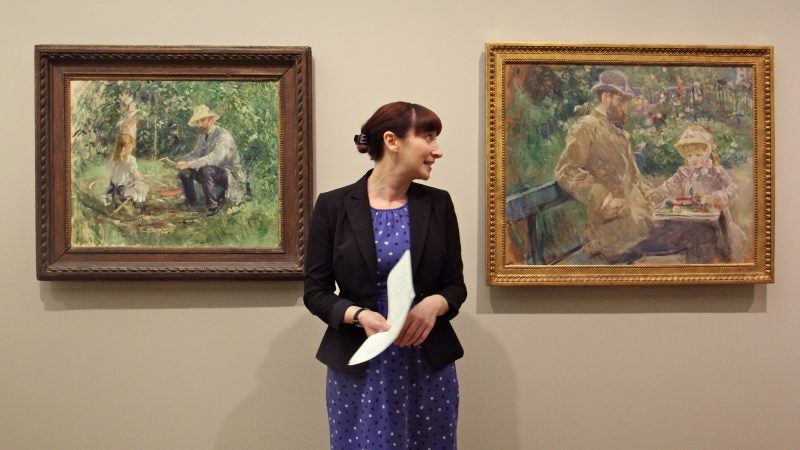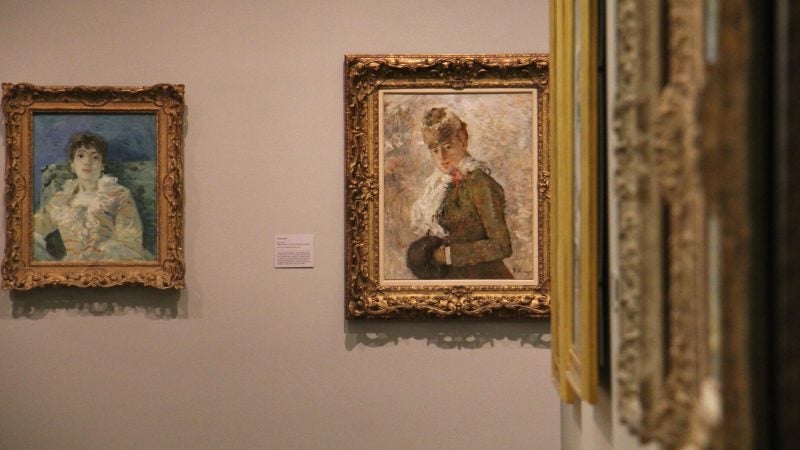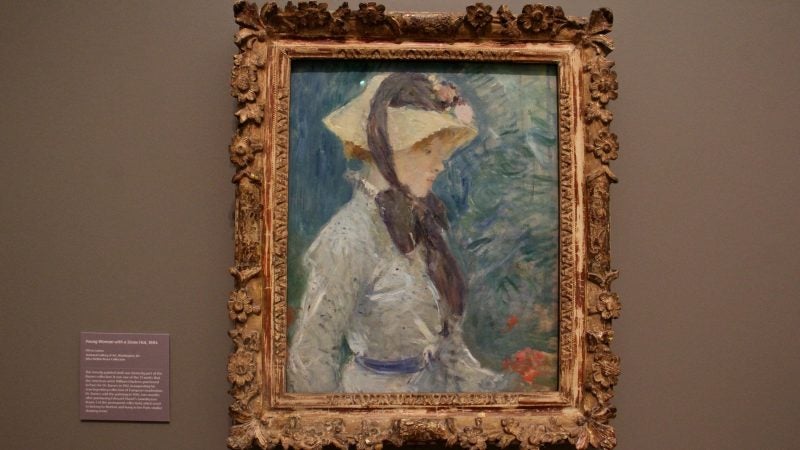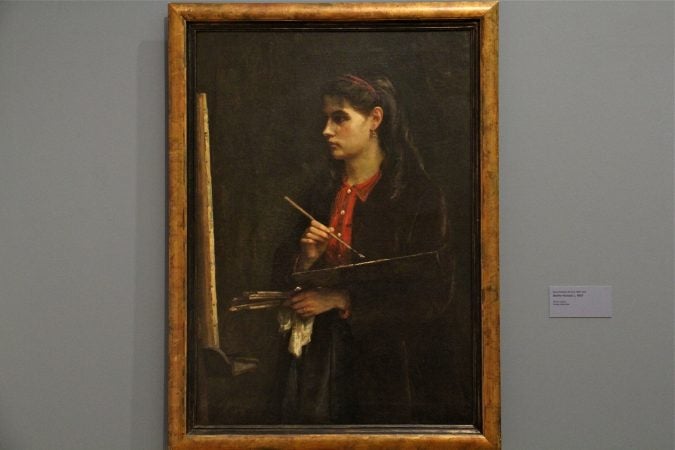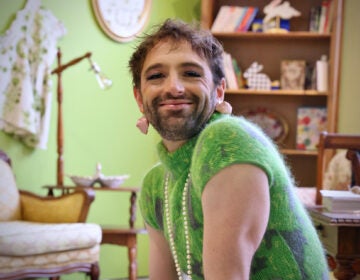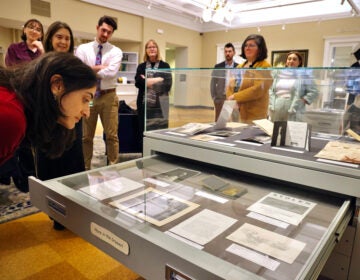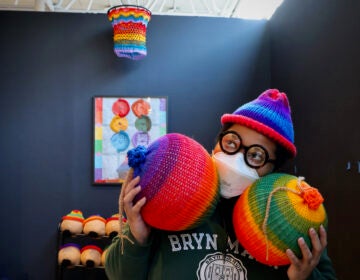Nearly forgotten French impressionist regains her moment in Philadelphia exhibit
Berthe Morisot - a founding artist of French impressionism who was nearly forgotten - is coming back at the Barnes Foundation.
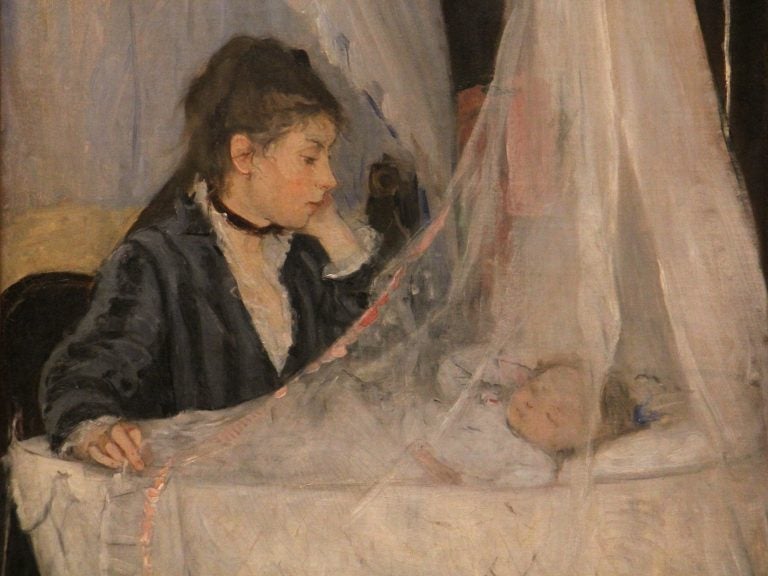
"The Cradle" by Berthe Morisot was shown at the first impressionist exhibition in Paris in 1874. Morisot was the only woman artist in the show. (Musée d'Orsay, Paris)
How many women impressionists can you name?
If you said Mary Cassatt, give yourself a point. But beyond that?
There were very few women in the impressionist boys club, and most of them have been nearly forgotten. The Barnes Foundation’s new exhibition, “Berthe Morisot: Woman Impressionist,” is trying to correct that.
“The title is not a reference to any notion that she was a feminine painter,” said co-curator Cindy Kang with the Barnes Foundation. “It is in reference to the fact that her gender does define her in history, and it does define the reception of her work.”
Morisot was a well-to-do, bourgeois artist who was there at the very beginning. She was one of the Anonymous Society of Painters – along with Monet, Renoir, Degas, et al – staging the first exhibition of impressionist work in Paris in 1874. She was the only woman in that show.
Impressionism was the avant-garde of the late 19th century. Even among the fringe, Morisot was one of its most radical. She painted a lot of pictures of woman in domestic scenes with extremely loose brushwork that was borderline abstract.
“Morisot’s technique is the most striking aspect about her,” said Kang. “I find it breathtaking the way her images seem to teeter between form and formlessness. You think they are about to collapse into abstract brushwork, but they cohere into magical images.”
Morisot was among the first to paint en plein air — to complete a canvas in one sitting, in the open air. She often liked her paintings to look unfinished, with plenty of raw, unpainted canvas plainly visible.
Another co-curator, Sylvie Patry of the Musée d’Orsay in Paris, said Morisot wanted to make paintings that looked as if they were made in a single moment, to accentuate the fleeting nature of time.
“It’s very experimental, this very daring aspect of her work is connected to her sensitivity and her sense of life in general,” she said.
Morisot married Eugene Manet, the brother of the prominent impressionist Edouard Manet, and had one child, Julie. Eugene and Julie became her subjects, and three paintings in the show are father-daughter scenes.
Clearly, her favorite model was Julie, whom Morisot painted over and over, at every stage of her childhood.
Even though Morisot and Manet built their own house, she chose to not design a workplace that was separated from her living space. She painted in the parlor. When she needed to receive guests, she pushed her art supplies aside.
“Morisot was working between these models of being an amateur female painter, and the professional avant-garde male painter with a separate studio from the home,” said Kang. “Morisot, as someone operating between these two worlds, fashioned her own hybrid space. She made her home life the center of her art, and her art the center of her home life.”
Morisot died at 54, leaving behind a relatively small body of work — just 423 paintings, most of which are now in private collections. Of the 68 pieces in the exhibition, 49 come from private collections.
Her legacy is hurt by the fact that the she actually destroyed much of her early work when she felt it no longer suited her.
Albert Barnes bought one Morisot painting, “Young Woman in a Straw Hat” (1884). It was part of his first impressionist art buying spree in France, in 1912, which became the foundation for his entire collection. However, Barnes sold it in 1934. It now lives at the National Gallery of Art in Washington and is on loan for this show.
Patry says in the last 15 years – more than a century after her death — Morisot’s reputation is coming back. For an art curator that’s a double-edged sword: Owners now hesitate more to loan them out.
“It started in the late 1970s with the rise of women’s studies,” she said. “There were a series of exhibitions in the U.S. in 1987, later in Europe. It’s a slow but rising popularity of recognition.”
“Berthe Morisot: Woman Impressionist” will be on display until Jan. 14.
—
This disclosure: The Barnes Foundation supports WHYY.
Editor’s note: this story has been updated to reflect the accurate breakdown of how many pieces in the exhibit come from private collections.
WHYY is your source for fact-based, in-depth journalism and information. As a nonprofit organization, we rely on financial support from readers like you. Please give today.



